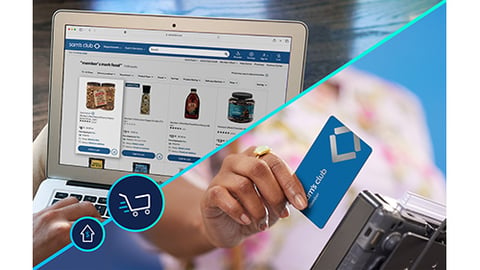Taking On In-Store and Online Promotional Strategies
Technology is changing the status quo for food retailers, with tools such as artificial intelligence (AI), social media and next-generation personalization making it easier than ever to streamline operations and connect with customers. When it comes to promotions, grocers and brands are finding ways to harness these types of technology to encourage trial and repeat purchases.
Today’s promotional strategies run the gamut from standard in-store marketing displays to promoting products across multiple channels, including email marketing, smartphone push notifications, online advertising and so much more. Promotions can often be a sure-fire way to get customers into physical stores and onto websites and mobile apps, but using the right tools is more important than ever.
[Read more: "The Grocer’s Guide to Tech"]
Michael Della Penna, chief strategy officer at Los Angeles-based InMarket, explains that the technology used in today’s omnichannel promotions has helped grocers and brands truly connect with consumers on their buying journeys instead of blindly trying to sell to them.
“For a long time, marketing has been so focused on who to advertise to, leveraging audiences, demographics and psychographics, and all those traditional targeting approaches,” says Della Penna. “What I think technology and data have done over the last couple years is really shift the focus to when and where the consumer is so you can connect with them, and also provide a deeper understanding of why the customer is shopping, not just who they are.”
Whichever avenue a grocer or brand decides to go down with its promotional strategy, there are a few considerations that should be taken into account.
The Personalization Imperative
Along with a deeper customer understanding comes the need to speak directly to that customer to serve up pertinent promotions. Today’s consumers are inundated with many daily emails from retailers offering generic discounts and offers, according to Sujeet Naik, research associate at New York-based Coresight Research, who further explains that personalization is vital to cut through the noise.
“Personalization allows retailers to provide targeted promotions more relevant to individual consumers, increasing the likelihood of a positive response,” explains Naik. “Offering personalization across promotions and recommendations, through text messages, social content and app content, typically leads to increased sales and basket size.”
With mountains of consumer data, including age, location, purchase history and the type of promotions a given shopper responds to, along with data analytics and machine-learning technologies, food retailers have the ability to tailor promotions at an individual level, notes Naik.
According to Della Penna, while true personalization requires technology and a slight mindset shift, it can make all the difference when a customer is reaching for a particular product.
“It goes back to the data and the technology,” he says. “It’s really about thinking differently about how you’re connecting with that customer and really looking at how to be of service to the customer, as opposed to just selling something.”
In-Store Upsells
While online promotions can inherently lean on technology and tools such as social media, in-store promotions can benefit just as much from a tech-driven strategy. Della Penna recommends making the brick-and-mortar experience as interactive as possible by offering options like the ability to scan a barcode to understand what the ingredients are in a given product.
InMarket’s location-based advertising, for example, uses a proprietary network of apps and a software development kit (SDK) that can connect with customers via smartphone as they enter a store. Brands and retailers can use that technology to drive real-time promotional programs that serve up a relevant experience to each individual shopper.
“It’s about surrounding the customer with helpful technology to have a better experience in the store,” notes Della Penna.
When it comes to in-store promotions in general, Naik has some advice for grocers looking to bolster their strategies:
Optimize product placement: Grocers must ensure that the promoted products are placed in prominent locations throughout the store. This could be in high-traffic areas, on end caps or on special displays.
Timing: This is critical when it comes to promotions. Grocers need to plan their promotions around key shopping events when the stores see high traffic, such as holidays or seasonal changes, to maximize the impact of their promotional campaigns.
Leverage technology: Grocers can use technology to improve their in-store promotional strategy. For example, they can use beacons or location-based technology to send targeted offers to customers in specific areas of the store. They can also use digital signage to promote products and highlight deals.
A Multifaceted Approach
Retailers looking for the real deal when it comes to an omnichannel approach should ensure that customers receive a consistent message across all channels, regardless of where they choose to shop, says Naik. One such approach includes disseminating coupons that can be redeemed both in-store and online, which incentivizes customers to visit both channels and can help drive sales across both platforms.
When it comes to buy online, pickup in store and curbside pickup, retailers should also employ functionality that triggers push notifications to inform customers of in-store offers and deals that could prompt them to either enter the store or add those items to their carts. Additionally, Naik explains that grocers can offer loyalty programs that are accessible both in-store and online to allow customers to earn rewards for purchases made in either channel, which can help drive engagement and repeat business.







